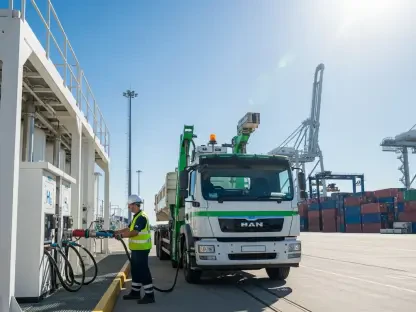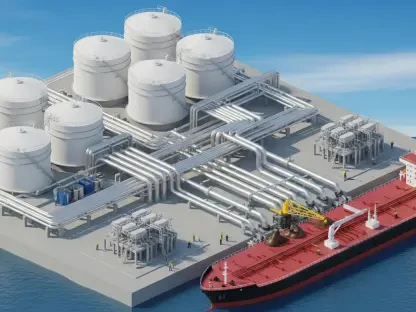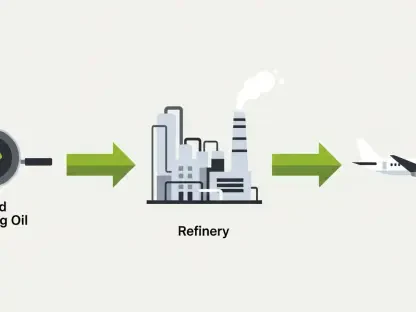Setting the Stage: A Pivotal Economic Alliance Under Scrutiny
In the complex tapestry of global markets, the India-US trade and energy relationship stands as a critical axis of economic influence, with bilateral trade in goods and services exceeding $190 billion annually, making it a vital partnership for both nations. This alliance faces a defining moment amid geopolitical tensions and evolving energy demands. As tariffs rise and international conflicts cast shadows over economic ties, the question looms: how will these two economic powerhouses sustain their collaboration? This market analysis delves into the current trends, data-driven insights, and future projections for India-US trade and energy sectors, uncovering the strategic maneuvers and potential opportunities that could shape their shared trajectory. The stakes are high, and the outcomes will reverberate across global markets.
Market Trends and DatUnpacking Trade and Energy Interactions
Trade Landscape: Balancing Growth with Geopolitical Friction
The trade relationship between India and the US remains a cornerstone of their economic engagement, with a robust exchange of goods and services driving mutual prosperity. Recent diplomatic efforts, including high-level discussions with key US lawmakers, highlight a commitment to expanding investment and market access. However, a significant challenge has emerged with the US imposing a 50 percent tariff hike on Indian imports, a policy tied to India’s procurement of Russian oil amid ongoing international conflicts. This measure, intended to exert pressure on external actors, has introduced friction into an otherwise thriving trade dynamic, potentially impacting sectors reliant on US markets. Data indicates that such tariffs could dampen export growth if not addressed through sustained dialogue and policy adjustments.
Beyond immediate hurdles, the trade market shows resilience through diversified sectors like technology, pharmaceuticals, and agriculture, which continue to anchor bilateral exchanges. Comparative figures suggest that trade volumes have maintained an upward trend over recent years, even under economic strain. The emphasis on mutual respect in diplomatic engagements signals a willingness to navigate these challenges collaboratively. Market analysts observe that resolving tariff disputes through strategic negotiations could unlock further growth, potentially increasing bilateral trade by 10-15 percent over the next few years if barriers are eased.
Energy Sector: Hydrocarbons as a Strategic Pillar
Energy cooperation, particularly in hydrocarbons, represents a vital segment of the India-US market relationship, with Texas emerging as a key hub for energy exports. Imports of US crude oil to India have surged by over 40 percent in the period leading up to 2025, reflecting a growing dependency on American energy resources to meet India’s escalating demands. Discussions between Indian diplomats and US lawmakers underscore the strategic importance of this sector, with a focus on deepening ties to ensure supply stability. Yet, volatility in global oil prices and geopolitical disruptions pose risks that could unsettle this critical supply chain.
Opportunities in the energy market extend beyond traditional hydrocarbons, as joint ventures in technology and infrastructure development gain traction. Both nations are exploring pathways to align regulatory frameworks, which could facilitate smoother transactions and investments. Market projections suggest that sustained collaboration in energy could position the US as a top supplier for India, potentially capturing a larger share of the market by 2027 if current trends persist. Addressing regulatory discrepancies and investing in innovation will be crucial to maintaining momentum in this high-stakes sector.
Geopolitical Influences: Tariffs and External Pressures
Geopolitical factors are increasingly shaping the market environment for India-US economic ties, with the recent tariff escalation serving as a prime example of how international conflicts ripple into bilateral relations. This policy, linked to broader strategic objectives, aims to influence global alignments but risks straining economic interactions by imposing additional costs on Indian exporters. Market analysis reveals that such measures could prompt India to diversify trade partners if unresolved, potentially reducing reliance on US markets in favor of other regions.
Despite these tensions, diplomatic channels remain active, fostering a dialogue that prioritizes economic stability over short-term friction. Historical data on trade disputes suggests that both nations have previously navigated similar challenges through compromise and policy recalibration. The current market outlook hinges on the ability to balance national interests with global pressures, ensuring that economic partnerships are not derailed by external dynamics. Analysts anticipate that targeted trade agreements could mitigate these impacts, preserving market access for key industries.
Future Projections: Emerging Opportunities and Strategic Shifts
Innovation in Energy and Trade: A Path Toward Sustainability
Looking ahead, the India-US market relationship is poised for transformation through innovation and emerging sectors. Renewable energy collaboration, encompassing solar and wind initiatives, is gaining momentum as both nations pivot toward sustainable goals. Market forecasts predict that joint investments in green technologies could attract significant capital inflows, with potential growth rates of 20 percent annually in this segment by 2027. Digital trade platforms are also expected to streamline commerce, reducing transaction costs and enhancing market efficiency for businesses on both sides.
Regulatory reforms and potential trade pacts stand as critical levers for shaping future market dynamics. Easing tariffs and harmonizing policies could unlock new avenues for growth, particularly in high-value industries like technology and healthcare. Analysts project that a comprehensive trade agreement, if realized, could boost bilateral trade volumes significantly within the next few years. However, geopolitical uncertainties remain a variable, necessitating agile strategies to adapt to shifting global landscapes.
Risk Mitigation: Diversification and Dialogue
To safeguard against market volatility, diversification emerges as a key strategy for both nations. India’s exploration of alternative energy suppliers and trade partners could buffer against disruptions caused by tariff hikes or geopolitical tensions. Simultaneously, the US stands to benefit from expanding its export markets in Asia, with India as a central player. Market projections indicate that a diversified trade portfolio could reduce dependency risks by up to 30 percent, providing a safety net for economic stability.
Strategic dialogue will play an equally important role in future market success. Ongoing diplomatic engagements signal a commitment to resolving disputes through communication rather than escalation. Industry insights suggest that establishing joint task forces to address trade and energy concerns could yield actionable solutions, fostering a more resilient partnership. The market outlook remains cautiously optimistic, contingent on the ability to translate dialogue into tangible policy outcomes.
Reflecting on the Path Forward: Strategic Insights for Market Success
Looking back on the analysis of India-US trade and energy markets, it becomes evident that while geopolitical tensions and tariff hikes pose significant challenges, the underlying commitment to collaboration holds strong through diplomatic efforts. The data reveals a robust trade foundation and a growing energy partnership, tempered by external pressures that test the resilience of this alliance. Market trends point to both risks and opportunities, with innovation and diversification emerging as pivotal themes.
As a next step, stakeholders are encouraged to prioritize structured negotiations to address tariff disputes, ensuring that economic ties remain unhindered by broader conflicts. Investment in renewable energy and digital trade infrastructure offers a promising avenue for growth, with the potential to redefine market interactions. Policymakers and businesses alike need to focus on building flexible strategies that can adapt to geopolitical shifts, securing a stable and prosperous future for this critical economic relationship.









